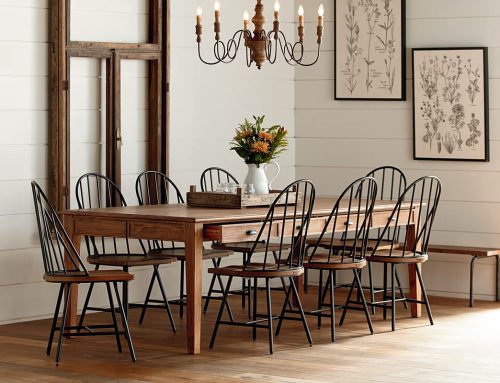This month at Postconsumers, we’re shining the light on some activities, hobbies, niches or even social norms that are ridden with consumerism but are often thought of as being postconsumer alternatives. Today, we’re tackling the topic of crafting. And while crafting has had its own share of controversy over the last years with the Hobby Lobby case in front of the United States Supreme Court, there’s a much deeper issue with the crafting establishment. While crafting can be a great way to save money, be creative, and reduce waste, it’s fairly easy to go down the consumer rabbit hole of crafting. Here’s how.
Why Do You Craft?
The first thing that you should do if you are wondering how far down the consumer rabbit hole of crafting you may have gone is to ask yourself why you craft. Chances are that the answer is one of three things.
You Want to Save Money: And you believe (possibly correctly, possibly incorrectly) that making your own crafts and items is a great way to do that.
You Don’t Want to Buy Into Consumer Society: And therefore making your clothes, décor and home goods means that you don’t need to shop at big box stores or brand stores.
You Find It a Great Way to Relieve Stress: Everybody finds satisfaction and stress relief through a different channel, and yours may be through crafting.
Where you need to look out for the relationship between consumerism and crafting may depend on what your answer above was.
You Craft to Save Money: But Are You Really?
It’s true that in ninety-nine out of a hundred cases it will be cheaper to make a dress from a vogue pattern than to buy a dress at Neiman Marcus and cheaper to make your own holiday wreath than it would be to buy an expensive one from a florist (that last one percent is for those people who only buy the most expensive fabrics and craft goods). And if your crafting were limited to a one-to-one replacement, you’d certainly be saving money. But the craft industry and community is infested with the idea of “more, more, more.” Craft stores are set up so that you’re continually enticed by colorful, fun craft projects that you could purchase the supplies for and complete in addition to the project you came in to shop for. The industry is designed to ensure that you have a never-ending to-do list of craft projects and to make you feel as though you’re only a “crafty crafter” if you have an entire closet – or even a room – dedicated to craft supplies. The marketing for the crafts industry is just as driven by trends and holiday seasonality as are the markets for home décor and fashion, so there’s always more for you to buy. So the question you need to ask yourself is, “Are you really saving money, or are you simply spending the same amount of money but on more stuff in a never-ending quest to finally ‘complete’ your craft supplies.”
You Don’t Want to Support Consumer Society: But Crafts Have Brands, Too
We’re obviously in support of anything that reduces your relationship with the consumer machine. But it’s important to remember that crafts have brands and are part of the consumer establishment as well. You may be shopping at a smaller, locally owned craft shop, but chances are much higher that you’re shopping at one of the massive national arts and crafts supply chains. Those are still big box stores that participate in all of the same questionable practices that other big box stores do, they simply do it within a specific merchandise niche. Of course, it is entirely possible to craft without buying into the consumer machine, and we’ll address that at the end of this article.
Crafting Relieves Stress: Debt Doesn’t
We’re all for anything that relieves your stress level. But we’re not for it if it relieves your stress level by adding to it at the same time! If your crafting habit stays within your budget comfort zone, then you don’t need to continue reading this section. But because the crafting industry is based on the idea of more, more, more and whatever huge craft has the closest and endless seasonal projects, it’s very possible that you’re hurting your own financial stability with your craft habit. That’s the definition of addictive consumerism. Again, we suspect this doesn’t apply to many people, but if it applies to you, stop, drop and evaluate the role of crafting and crafting consumerism in your life.
How to Craft and Save Money, Reduce Stress and Avoid the Consumer Machine
The answer is simple! Focus on creating projects from items you can upcycle, acquiring a craft closet full of materials you can later upcycle and only buying the first-hand craft supplies that you absolutely need (and obviously there will be some). You may be surprised how many great materials, buttons, trim and other supplies you can grab for current or future crafting projects at your local goodwill, thrift store or even consignment shop. Yes, you’ll still need to hit the crafts store (local or otherwise) for specific supplies. But you’ll build up a cache of products to use without going down the consumerism rabbit hole and you may even get inspired for a project by what you see, all for less money than an average total checkout at a big box crafts store.
Did we miss a way that consumerism is entwined with crafting that you want to share with us? If so, just tell us about it on one of the social media channels below.
Facebook | Twitter | Instagram | Tumblr | Pinterest | Google+
Photo Credit: JustyCinMD via Flickr





